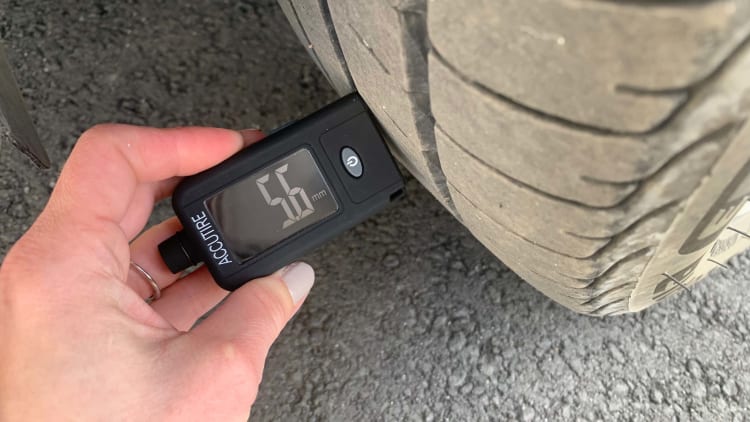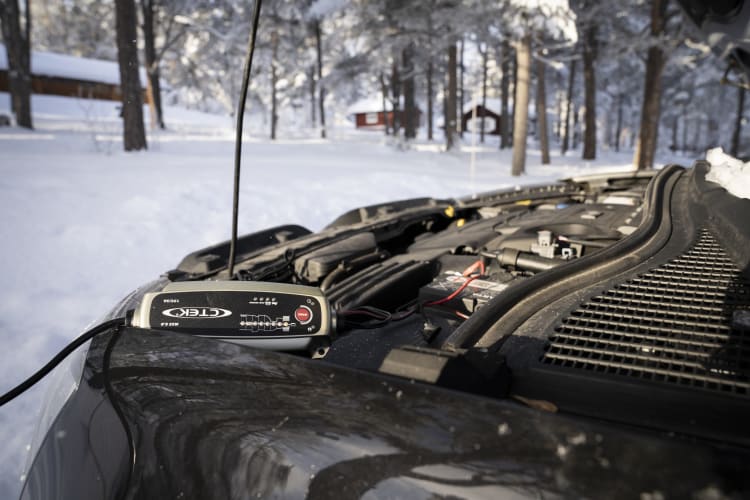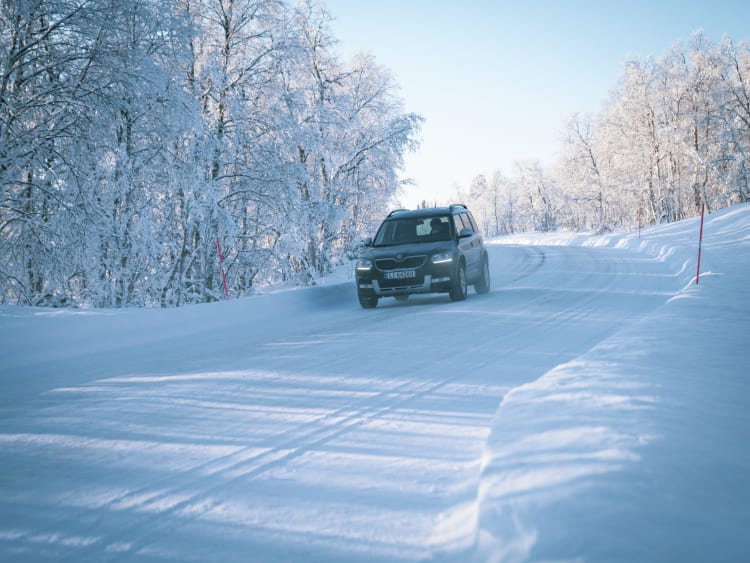Many people get a surprise when the lead changes. Therefore, make sure to make some simple preparations for the new season and follow the weather forecast.
10 tips for the car before colder times:
- Check that all lights are working
- Check tread depth and age on the tires
- Check the wipers, washer fluid and windscreen
- Wash, clean and polish the car regularly
- Check and, if necessary, change engine oil
- Check and, if necessary, maintain the battery
- Check the passenger compartment filter
- Check the coolant level
- Lubricate locks and doors
- Use the handbrake and brake hard regularly
How to get the car ready:
1. The lights must work
Autumn and winter require good lights on the car, and now it is extra important to check that the lights work properly and are properly adjusted.
It is easy to check if the lights on the car work. In modern cars, you should get a notification in the dashboard if one of the light bulbs has gone out. But regardless of the warning or not, it is a good idea to take a tour of the car and see if all the lights work properly. Also check the high beam when you are running.
The brake lights are harder to check if you are alone. A simple trick is to back up against a wall to see if the brake lights work when you step on the brake pedal. The wall can also be used to check the other lights. If you are unsure, feel free to ask if anyone at home or next door has the opportunity to see you.
2. Tires and tire pressure
The most important thing on slippery winter roads is that you have safe and good winter tires. The minimum requirement for a tire tread on winter tires is three millimeters of tread depth over 2/3 of the tire’s width, but we recommend a minimum of four millimeters. For summer tires, the requirement is 1.6 millimeters of tread depth over 2/3 of the tire’s width, but we recommend a minimum of three millimeters.
For car owners who drive little, the tires can apparently look good – with good tread depth. However, the rubber ages and becomes hard. This results in poor properties.
Remember that the correct air pressure is the alpha and omega when it comes to safety, environment and economy. The tire pressure should be checked when the wheels are cold, and should be done once a month.

3. Check the wipers, washer fluid and windscreen
The wipers are a wearing part that can easily be forgotten, and as soon as it snows or rains – many people are surprised by noisy wipers. Worn windscreen wipers create artistic streaks on the window and give poor visibility.
Check that the rubber on the wipers is intact and clean. If it is worn, replace wipers. In any case, they should be replaced once a year. Another good piece of advice is to wash your wipers every time you refuel or charge your car.
If the washer fluid in the tank is intended for summer use, it is smart to replace it with a washer fluid that is more suitable for sub-zero temperatures. It will clean better in winter and will not freeze as easily. If it is very cold and the washer system does not work on the car, it may mean that the container is either empty or that the washer fluid in the pipes/container has frozen. If the washers are frozen, they will usually thaw as the heat from the engine thaws the pipes, or a few hours in a heated garage will work wonders.
Do not forget to wash the inside of the windshield. The windscreen is exposed to a number of external influences and you will find many scratches when you wash the window inside – you should get someone to look at it. It does not necessarily have to be splash damage that is the reason for the change, but ice scraping, windshield wipers, dirt and grime also cause wear and tear. Clean and clear windscreen is about traffic safety and good visibility.
4. Washing and polishing
It is important to give the car a proper sponge wash – both inside and out . It protects against salt and other contaminants and also makes the car easier to keep clean. Machine washing is better than nothing, but a good round of hand washing is the very best. If you wash your car more thoroughly, you should also consider polishing it . A polish “seals” the paint and makes it more resistant.
5. Check and change engine oil
For cars with internal combustion engines, oil is one of the most important things for the car’s health. We recommend that you follow the service intervals, but it does not hurt to change the oil once a year, even on newer cars. Old oil or running out of oil can be the root of many costly problems in the long run. Do not forget to gauge the oil so you are sure that the oil level is correct.
6. The battery – most often creates startup problems
Most batteries last for 5 to 7 years. Start-up problems and a flat battery are among the most common assistance assignments for our car rescuers. This applies to both cars with petrol or diesel engines and electric cars since electric cars have a standard 12-volt battery that provides power to all control electronics. With a flat 12-volt battery, you do not get much pleasure from the electric car either, even if the “driving battery” is fully charged.
If you have a lot of starts and stop and short trips, the car is unable to recharge the power that was used to start the car. Therefore, maintain the battery before autumn and winter. You can do this easily at home with a home charger or you can go to a workshop to get it done.

7. Check the passenger compartment filter
Do you notice a nasty smell in the car or maybe a lot of dew? Then your pollen filter may need to be replaced. It is not critical for a well-functioning car but is important for comfort.
Many car owners do not know, or forget, that they have a fresh air filter (pollen or passenger compartment filter). This filter should be replaced once a year, depending on the driving conditions of the car. With a tight pollen filter, there will be less airflow into the car interior, which gives a poor effect on the heater. Check the instruction manual where the filter is located and recommended operating time.
8. Antifreeze / coolant is important
Check the coolant level and check that it can withstand the cold. This is important to do, as too low a mixture of antifreeze can have catastrophic consequences. The fact that the radiator freezes and cracks is almost a trifle compared to whether the engine block itself should crack. Antifreeze has additives that also have a lubricating and anti-corrosion effect. The correct mixing ratio is always stated in the instruction manual or on the packaging of the antifreeze.
If you are unable to do it yourself, this can be measured in an instant at a workshop or a NAF center.
9. Lubricate locks and doors
Water that has accumulated along with the door moldings and in the door locks freezes in the cold. The result is that they can not be opened. Therefore, use silicone pins on all door frames and inject locking oil into all locks.
10. Use the handbrake and brake hard regularly
The handbrake is easy to get stuck in the cold. To avoid this, you should therefore make sure to use the handbrake often, so that the mechanisms are in regular motion.
It is also a good idea to break hard in controlled forms sometimes through the winter to get rid of the rust that settles on the brake discs.

Have extra equipment in a bag in the trunk:
- A good ice scraper
- Snow food
- Flashlight
- Locking oil
- Cover washing / cleaning
- Starter cables with surge protection
- Towing rope
- Small shovel (preferably collapsible)
- Quick chain or auto sock
- Extra warm clothes, mittens / gloves, headgear and footwear
- Pledd